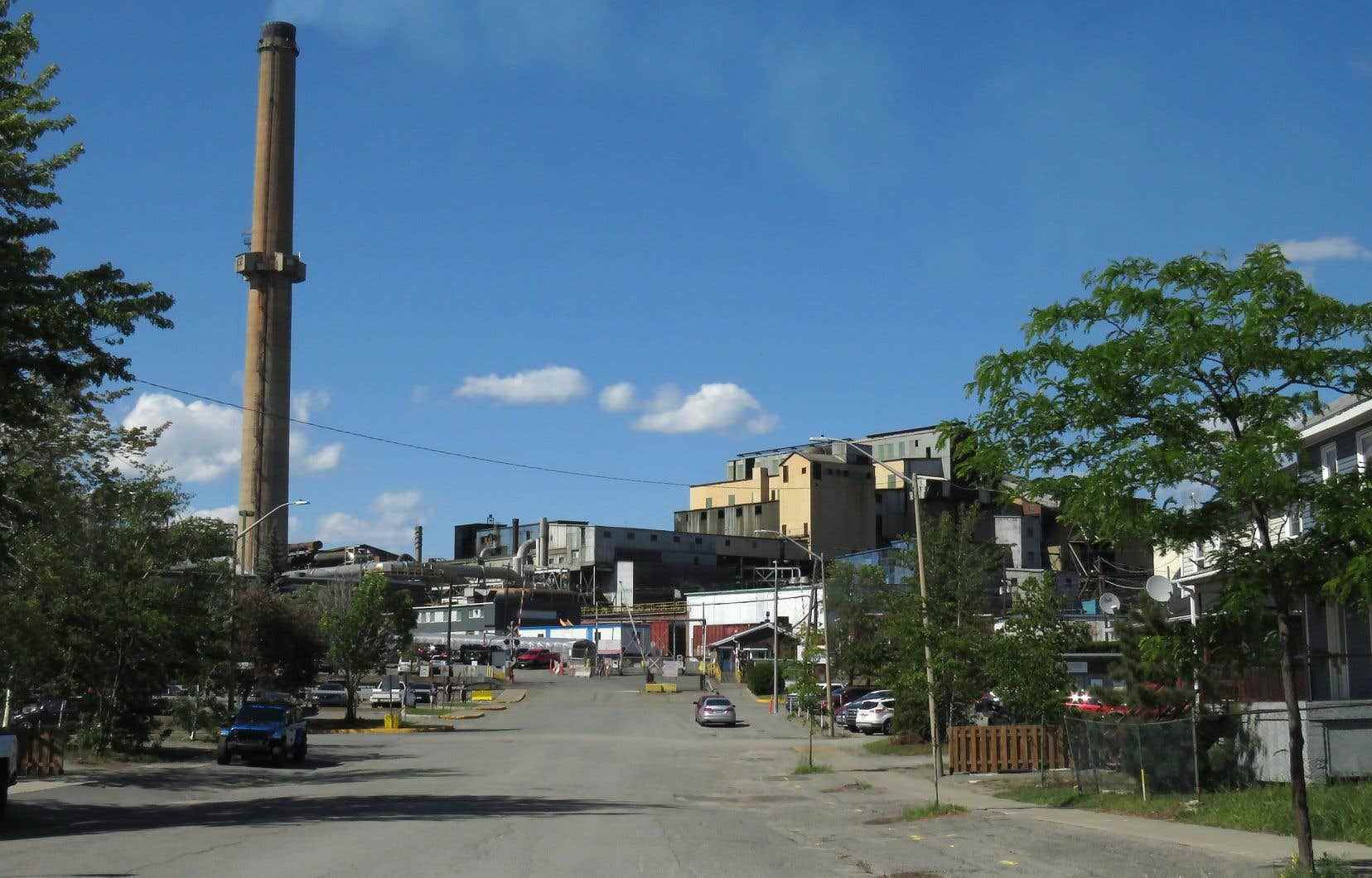Arsenic emissions captured near the Horne smelter between 2017 and 2021 exceeded the limits imposed by the Ministry of the Environment 93 times, data obtained by The duty. Even on the side of cadmium, another metal reputed to be carcinogenic, the samples exceeded the authorized standards almost half the time.
Jonathan St-Pierre drinks his coffee every morning with a clear view of the two chimneys of Rouyn-Noranda’s metal monster. “Ninety percent of the time the smoke is gray, with a smoky color. But it freaks out when it changes color. It turns yellowish, dark orange, ”he says.
These releases of chemical products “taste like mine”, according to the local expression.
“There is a taste of metal in the air, it’s pasty, it’s hard to describe, tries to illustrate the professor, who has lived in Rouyn-Noranda for 22 years. It doesn’t taste clean. »
Analysis of the city’s air reveals that arsenic measurements exceeded 1000 nanograms per cubic meter (ng/m3) five times between January 2017 and March 2021, i.e. ten times the smelter’s acquired right to pollute, which is set at 100 ng/m3 since February 2020. Acceptable pollution was previously set at 200 ng/m3.
Statistics from the Ministry of the Environment and the Fight against Climate Change consulted by the To have to represent the concentrations of total suspended particles in the vicinity of the smelter.
Samples were captured once every three days, for 24 hours, according to the document that accompanies the data. This excess pollution therefore only represents a portion of the plant’s total emissions.
“It is very well known that arsenic is carcinogenic. The risks are higher in the region. Of how much ? I can’t tell you, because several other factors contribute to cancer, ”notes Audrey Smargiassi, collaborator at the National Institute of Public Health of Quebec on air pollution issues. “The arsenic standard is exceeded, and that should be enough to take action. »
The largest peak, measured on May 19, 2017, was 1880 ng/m3which means that the smelter belonging to Glencore generated concentrations of arsenic in the air 627 times higher than the Quebec standard, set at 3 ng/m3.
On the cadmium side, the standard, set at 3.6 ng/m3, was exceeded by 231 of the 501 samples included in our data, which is equivalent to 46% of the days examined. But even when the emission of pollutants is below the thresholds, “the accumulation of all that makes a soup that can have effects on our bodies. But it is very difficult to assess, ”explains the president of the Order of Chemists of Quebec, Michel Alsayegh.
toxic puffs
When releases of toxic metals are not continuous, this burst pollution can harm human health. “A contaminant that we breathe a little one day, then another day, then another day, it can accumulate in the body. It’s clear, it’s proven. That’s why we have standards,” confirms Michel Alsayegh. The observable consequences, however, remain unclear “when we talk about breathable air”, according to him.
A study by the National Institute of Public Health of Quebec published last Wednesday indicates that, over a period of 70 years, between 1 and 14 residents of Rouyn-Noranda will develop cancer if the company Glencore does not reduce the arsenic discharged into air produced by the Horne Foundry.
Rouynorandians already suffer from low birth weight, lung disease and lung cancer in greater proportion than the rest of the province, the CISSS de l’Abitibi-Témiscamingue revealed a few weeks ago. However, the study cannot demonstrate “a causal link” between the pollutants and these health problems.
There’s a taste of metal in the air, it’s pasty, it’s hard to describe. It doesn’t taste clean.
“My daughter was born at three pounds. Technically, it falls into the low weight statistics, indicates Jonathan St-Pierre, who himself has no doubts about the impact of the foundry’s activities on the health of his fellow citizens. Do we really want to exhibit them anyway? »
Charette eagerly awaited
The exceptional pollution agreement between the previous government and Glencore, owner of the Horne smelter, ends this year. The Ministry of the Environment must negotiate a new target this fall.
The Minister of the Environment of Quebec, Benoit Charette, must go Wednesday to Rouyn-Noranda to meet the local actors and reassure the citizens on the approach of Quebec.
Last week, he did not dare advance a threshold that could be imposed on the Horne foundry. Prime Minister François Legault, for his part, said that all options were on the table, including the closure of the foundry if necessary, to protect the health of the population of Rouyn-Noranda.
Several citizen groups are waiting for Minister Charette with a firm footing, including the Rouyn-Noranda Toxic Discharges and Emissions Stop Committee. His co-spokesperson Valérie Fournier participated last Monday in a stormy city council to convince the mayor, Diane Dallaire, to support them in enforcing Quebec standards.
This mobilization has borne fruit. “We all agree that the status quo is unacceptable,” the mayor said on social media on Tuesday. Quick changes must be made. […] We will put all the necessary pressure on the government and the company so that we can breathe quality air! »
“We feel that this is no longer the battle of a group of neighborhood citizens, but it is becoming a battle of all the citizens of the city to preserve our health and that of our children,” says Valérie Fournier.
The mobilization of recent weeks also gives hope to Jonathan St-Pierre, who however has no illusions about the goodwill of the owners of the foundry. He fears the government will be footing the bill for reducing pollution. “Glencore expects citizens to pay themselves so as not to poison themselves. That’s the impression we have. »
The Horne foundry employs more than 600 people in Abitibi-Témiscamingue.
